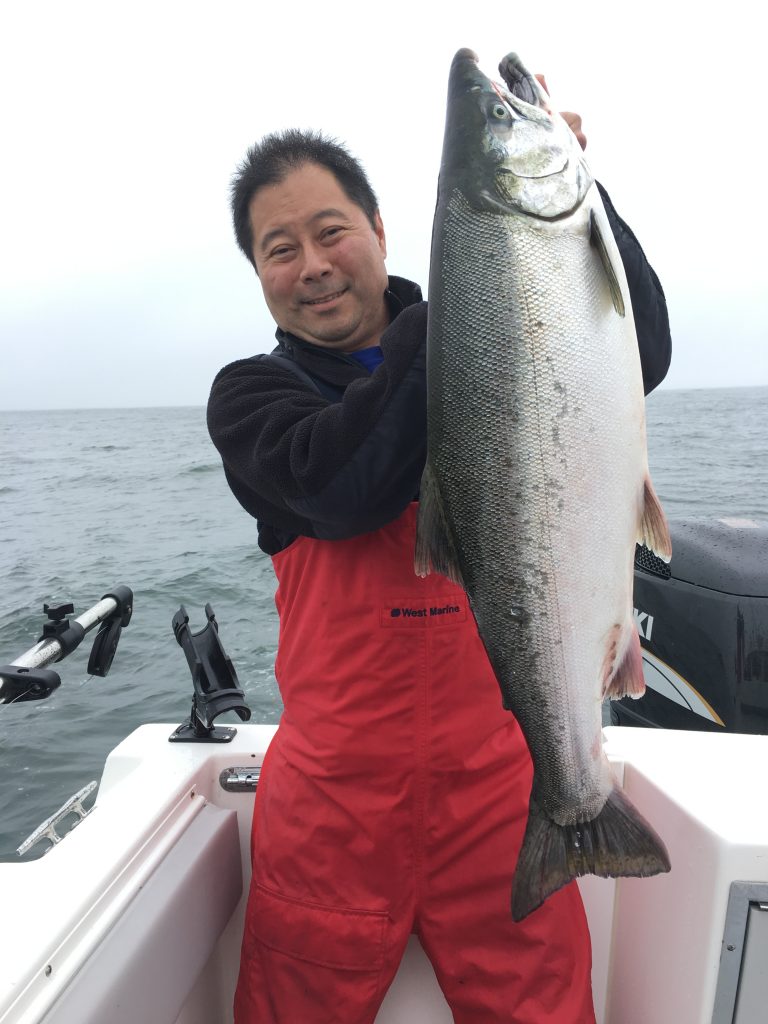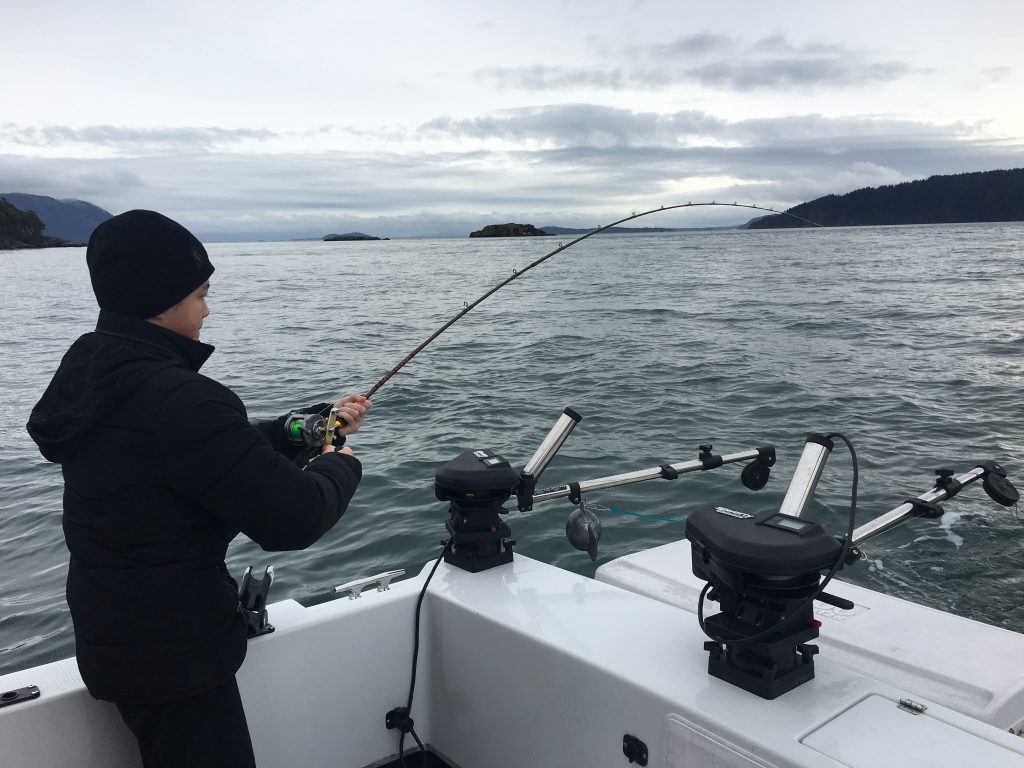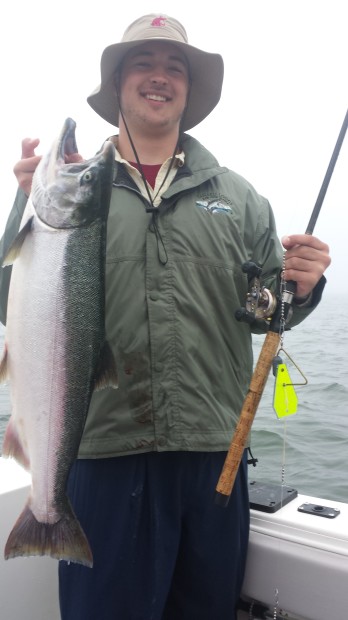Ocean coho abundance and Columbia River forecasts for 2020 come to light and points to low returns on paper 5

Predicting salmon returns is a lot like betting your life savings in the lottery, and while the Columbia River coho forecast doesn’t look very rosy on paper it is probable that we’ll still come out in April when fisheries are finalized with some type of summer ocean fisheries package.
The Oregon Production Index, which provides ocean coho abundance forecasts, was released Wednesday, by state fisheries officials, and numbers this summer/fall appear to be down dramatically.
The forecast calls for 268,700 coho to arrive off the Washington-Oregon coast, compared to a preseason forecast of 1,009,600 last year and an actual return of 408,100 (forecast in 2018 was 349,000 and an actual lower return of 230,700).
The Columbia subtotal this coming season is 181,000 – coho that turn the corner of southwest Washington near Cape Disappointment and doesn’t include the northern Oregon coast. There is also a small coast subtotal of 4,700 coho forecasted (27,090 forecasted in 2019 and 3,000 was actual return).

“It looks really bad although it doesn’t come as a surprise considering the low jack returns and the adult coho returns in 2019,” said Wendy Beeghly, a WDFW coastal salmon manager. “What has me concerned is the Columbia River early- and late-timed coho returns for 2020 appear to be poor and those are the key drivers in ocean sport fisheries.”
The Columbia River early coho return is 130,700 (545,000 was the 2019 forecast and the actual return was 191,400); the late coho return is 50,300 (360,600 and 106,100). The total Oregon coast natural coho return is 83,000 (76,100 and 107,600).
Now how this low forecasted coho run really affects ocean sport fisheries at Neah Bay, La Push, Westport and Ilwaco and all locations in between is still up in the air for debate, but there’s been runs equally this low in the past and fishery managers still crafted fishing seasons.
One expert close to the how seasons are crafted put it this way: Even if we do have low coho catch quotas then a lack of them in the ocean could keep the salmon fisheries alive since chinook returns while not officially out could be forecasted similar or slightly better than 2019.
It’s also a “Catch 20” situation because if coho quotas are based on the forecasted low return but in-season shows a stronger abundance then the catch will likely get eaten up that much faster.
Fishery managers indicate the 2020 adult coho returnees went out into the ocean as juvenile fish and suffered a big die-off (most likely related to the “Blob”) since all indications showed a great outgoing pattern for the 2019 returns.
When looking at past coho seasons dating back 10 years this season could land right on the same page as 2010, 2011 and 2012 when it was in the doldrums. The situation improved in 2013 and a lot better by 2014 although there wasn’t many coho caught in the ocean fishery.
Other mitigating factors that will play into how sport salmon fishing seasons are carved out this season are forecasted coho returns off the Washington coast, inner-Puget Sound, and the Fraser and Thompson rivers in British Columbia.

Summer and fall salmon forecasts including the Puget Sound/Strait of Juan de Fuca region will come to light when WDFW unveils their outlook 9:30 a.m. to 12 p.m., Friday, February 28 in DSHS Building Auditorium, 1115 Washington Street S.E., in Olympia.
A draft of the three ocean salmon fishing options will likely be released at Pacific Fishery Management Council meetings March 3-9 in Rohnert Park, CA.
Other public meetings include the North of Falcon meeting at Lacey Community Center, March 16; North of Falcon meeting in Sequim, March 19; Pacific Fishery Management Council hearing at Westport, March 23; North of Falcon meeting at WDFW Mill Creek office, March 26; and North of Falcon meeting at Lynnwood Embassy Suites, 20610 44th Avenue West, March 30.
The Pacific Fishery Management Council will adopt final salmon seasons at the Hilton Vancouver, 301 West 6th Street in Vancouver, WA, on April 5-11. For specific meeting agendas and times, go to https://wdfw.wa.gov/fishing/management/north-falcon.


close the Ocean
This is what happens when you have a derelict fishing department that takes the money and puts it in the general fund and not back into the Fisheries our hatcherys are in shambles
Cut commercial fishing and drift netters eather off or in half
very concerning time's
All this forecast for fish yet natives and commercial guys quotas dont change at all. These idiots at the wdfw will never learn. And only wanna take away from the people who spend all their own money and keep maybe 20 salmon a year. Go away wdfw. Or actually do something about the real issues.